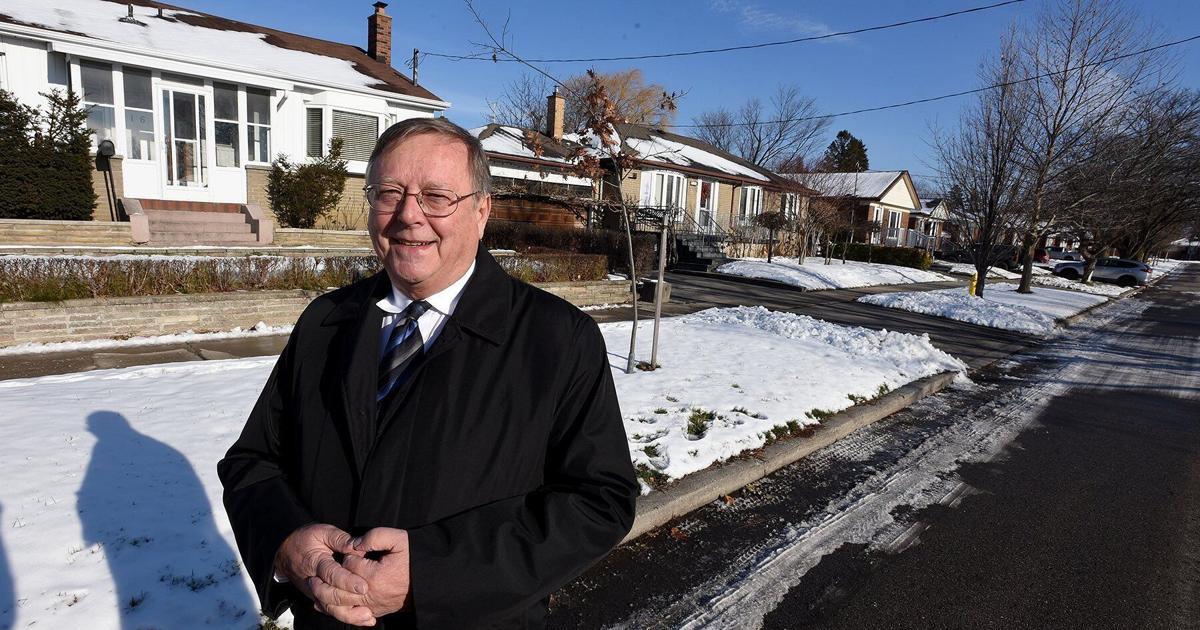Ionview, on the Crosstown light-rail line and close to a transit hub, is one of six districts where city planners will study this proposed so-called multiplexing in 2022.
Realtors and
the Toronto Region Board of Trade want to see it happen, and so do people who want to buy or rent homes in a city that’s never been so unaffordable.
But opening suburbs up to townhouses, duplexes, triplexes, garden suites and even low-rise apartment buildings is something many current residents will fight.
“To me, there’s nothing in this that’s gentle intensification,” said Hardy, a planner and director of Scarborough Community Revitalization Organization.
“Here and there, having higher density housing can be helpful. But this is a full-scale rethinking of what the city is about.”
Roughly one quarter of Toronto’s land —
such as the Golden Mile west of Ionview — is targeted for growth and three quarters isn’t, partly thanks to zoning permitting only detached homes on 31 per cent.
Though many North American cities and entire U.S. states have introduced multiplexing, the current Toronto City Council is unlikely to agree.
Staff spent 2020 proposing a city-wide system for legal rooming houses. It turned embarrassing for Mayor John Tory, who couldn’t convince councillors in Scarborough, Etobicoke or North York to accept it.
Scarborough homeowners fought the rooming house proposal, which the city called “multi-tenant” housing. Michael Thompson, Ionview’s councillor and a deputy mayor, says residents will see multiplexing the same way.
“It’s an impact and an intrusion on the way neighbourhoods are now,” he said.
“It’s going to be met with, I believe, tremendous opposition.”
In contrast,
83 per cent of 6,400 survey responses the city collected this fall strongly agreed with allowing multiplexing citywide.
Hardy, founder of a thinktank called the Institute for New Suburbanism, doesn’t say more affordable housing isn’t needed or oppose more density around transit, but he argued there’s no evidence missing middle options will be affordable.
Equity-supporting arguments for multiplexing are “outrageous” in multicultural Scarborough, and neighbourhoods open to housing options won’t be better for climate change, since carbon-absorbing lawns and trees will be lost, Hardy said.
In a recent city meeting, however, Phil Pothen of the advocacy group Environmental Defence called city-wide multiplexing “an environmental imperative” because it would help preserve natural heritage and agricultural lands outside Toronto.
Prof. Frank Clayton, senior fellow at Ryerson University’s Centre for Urban Research and Land Development, said missing middle housing isn’t a threat to neighbourhoods but a chance for people to stay in them.
“Your kids can’t afford to live where you do, so where do you want your kids to live? It could be a townhouse down the street,” he said.
Suburban councillors will vote against multiplexing, Clayton said, but it will happen anyway, because the province, with sweeping powers, will force it through.
Many people want housing that’s “ground-related” instead of in highrises, and multiplexing can bring financial benefits to single-home owners, he said.
Recently, Gregg Lintern, Toronto’s chief planner, told city councillors missing middle housing won’t be “capital-A affordable housing,” but market housing. The multiplexing proposal
Expanding Housing Options in Neighbourhoods, he suggested, is meant to support climate action, inclusion and better utility of space in the city.
City staff will assess how infrastructure in detached-home neighbourhoods would accommodate growth before bringing recommendations to councillors before the end of the council term.
City-wide roundtables and ward-level meetings on multiplexing may begin in late February or early March. Ionview is a Neighbourhood Improvement Area without a residents’ association, but staff say the city will try to ensure different voices are heard.





